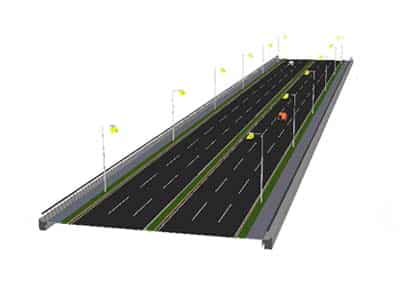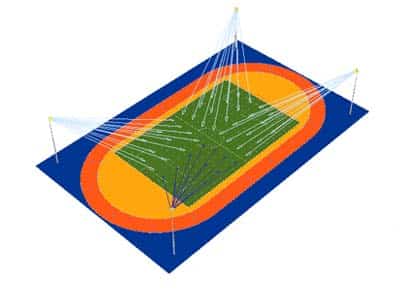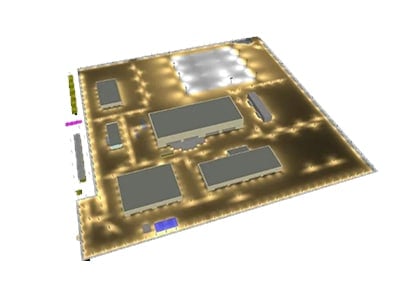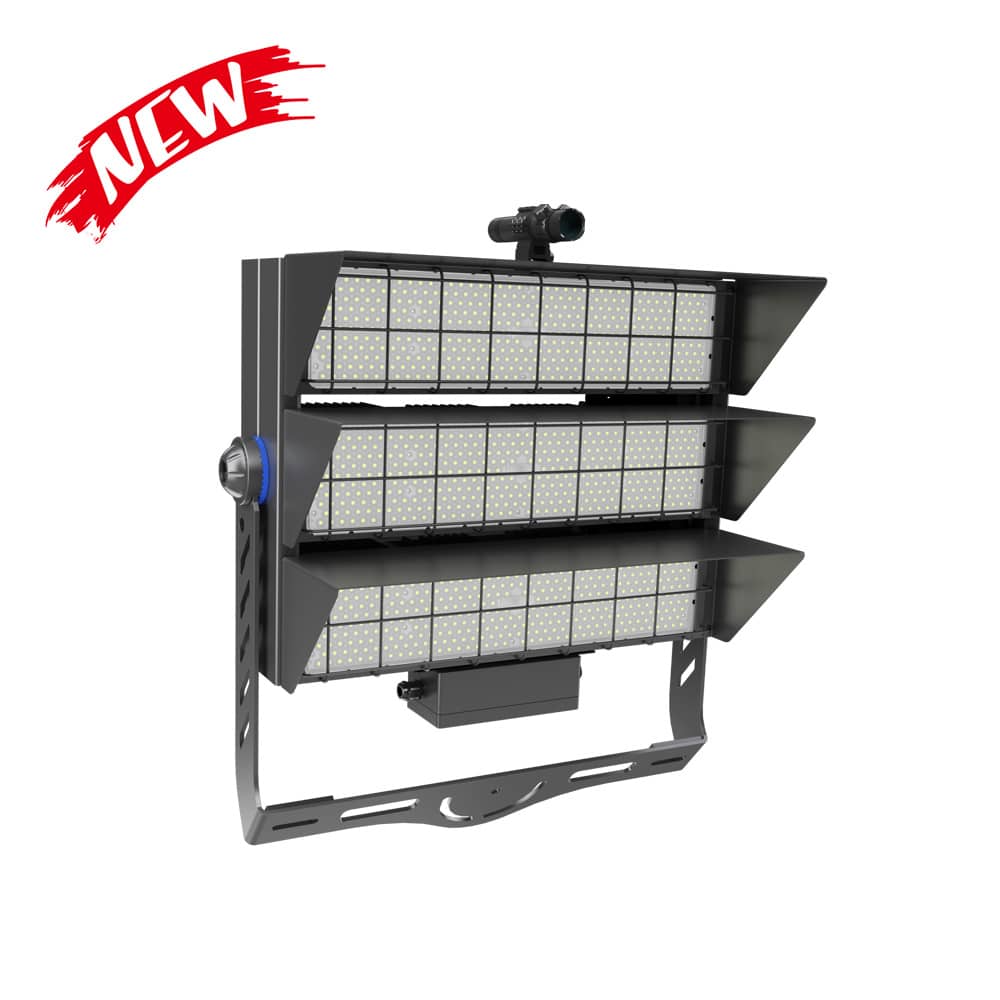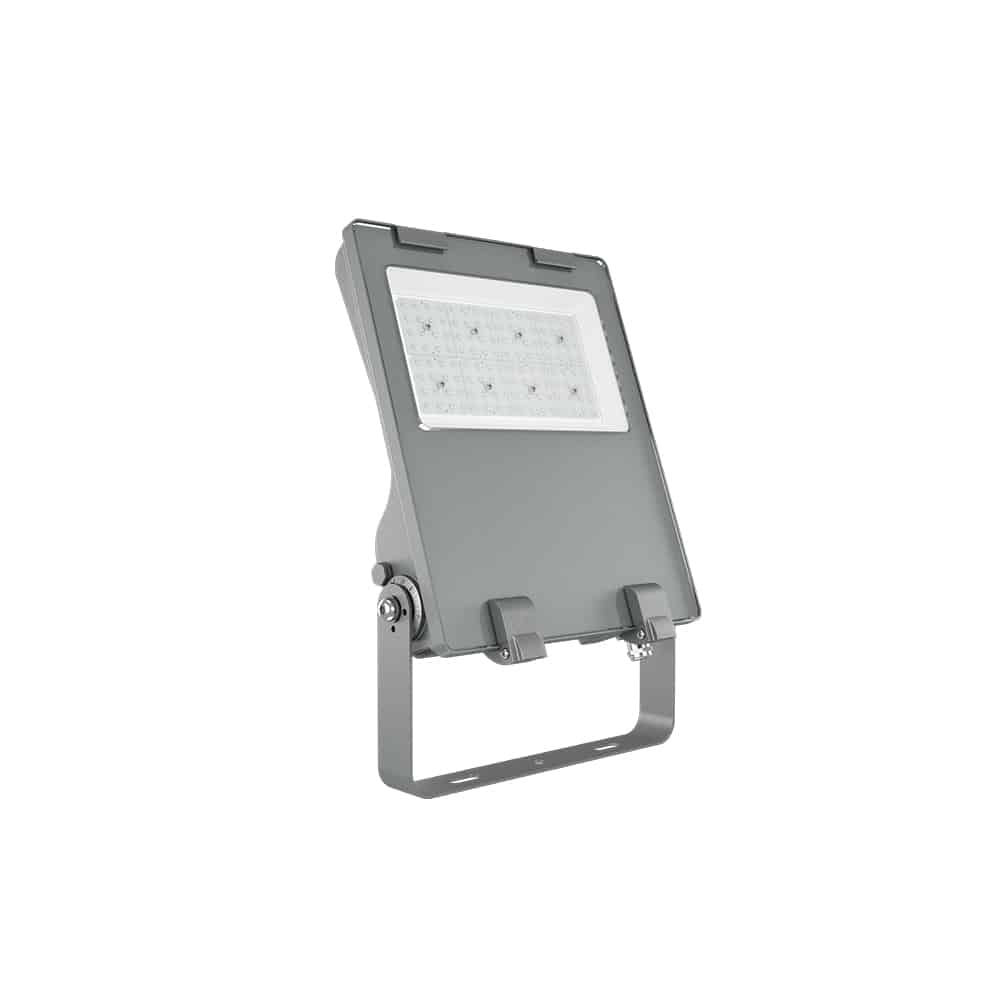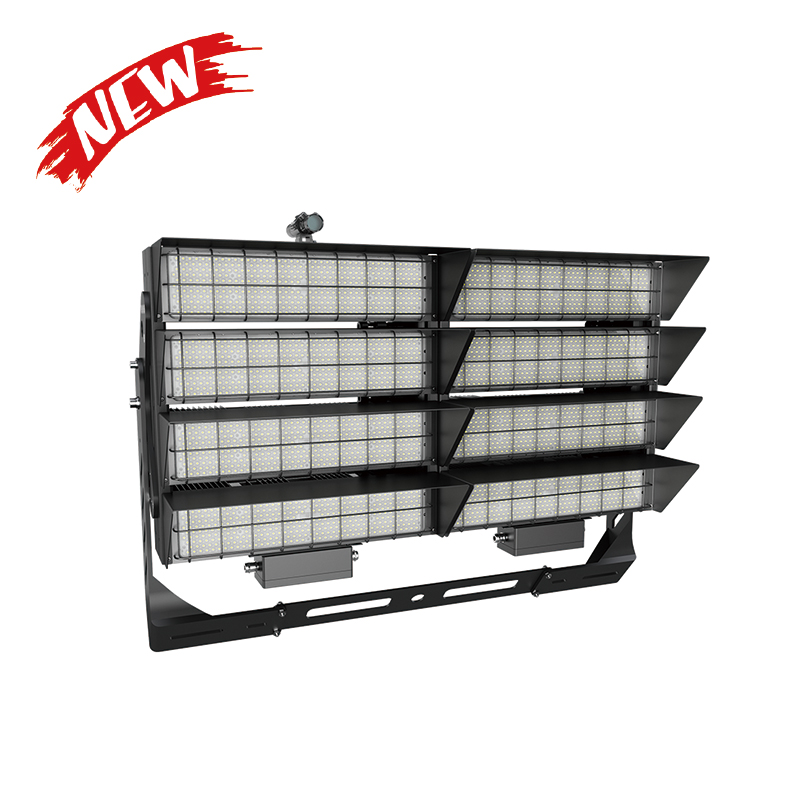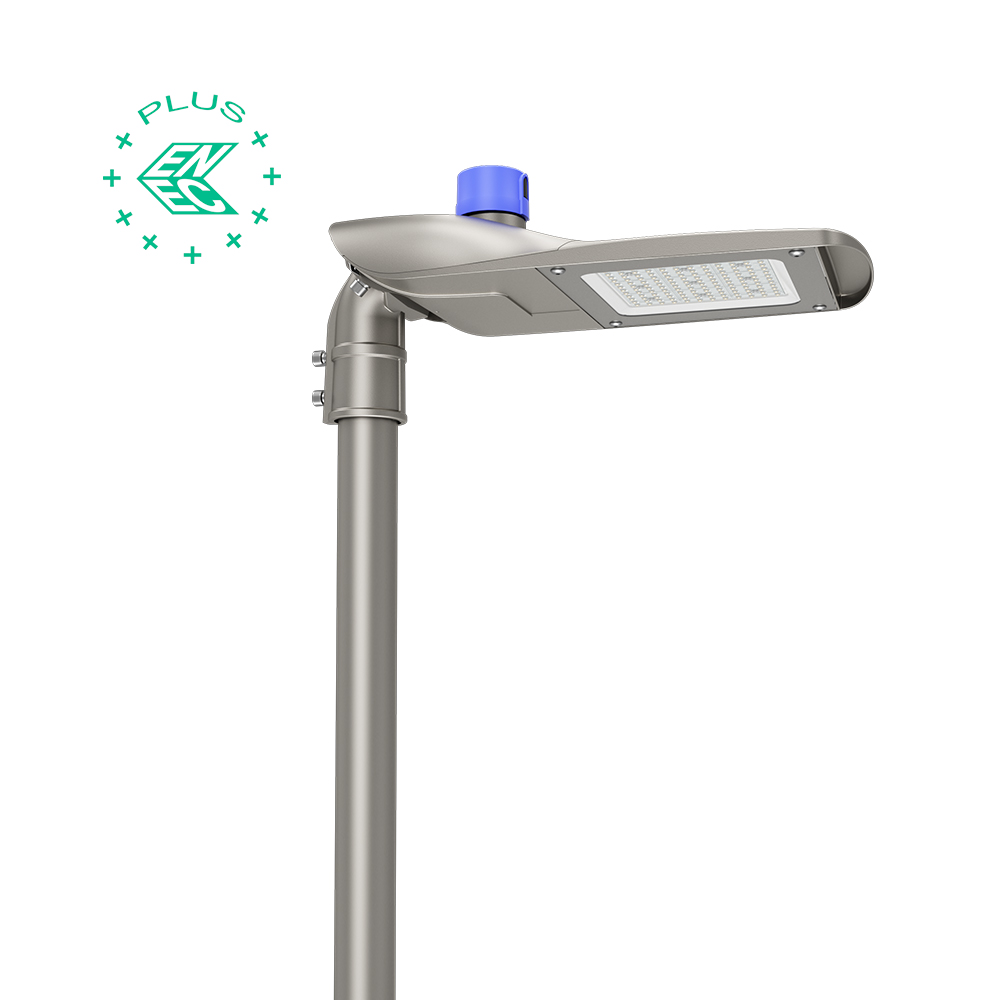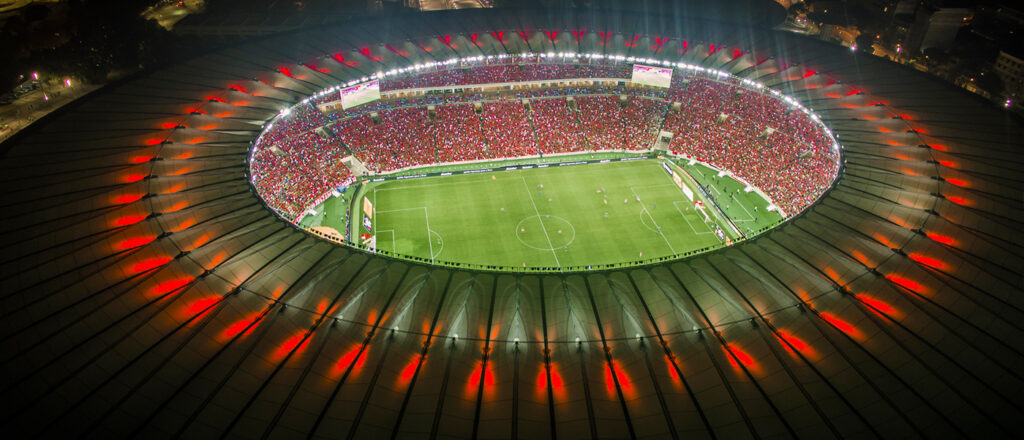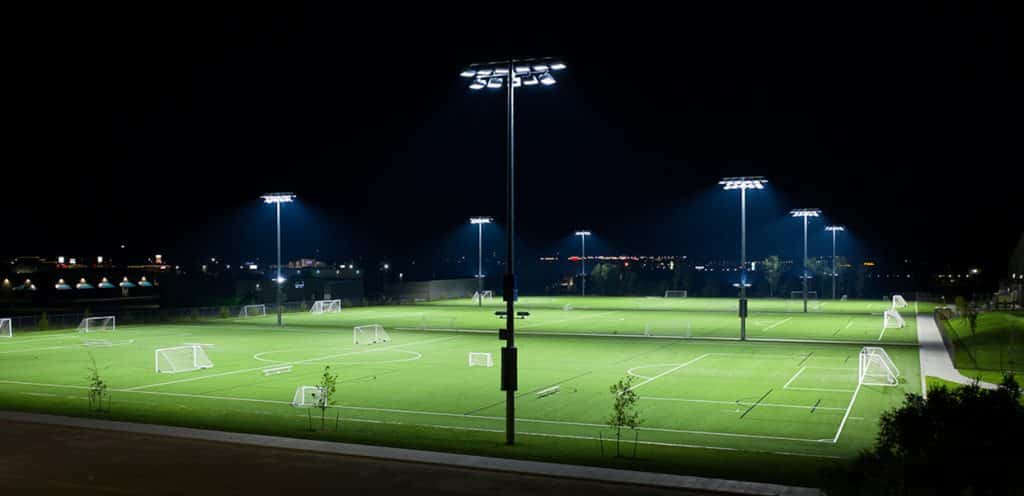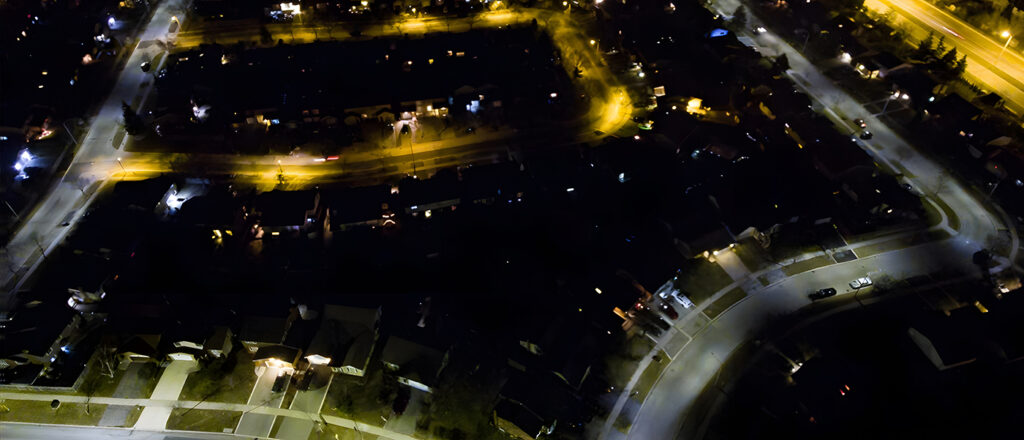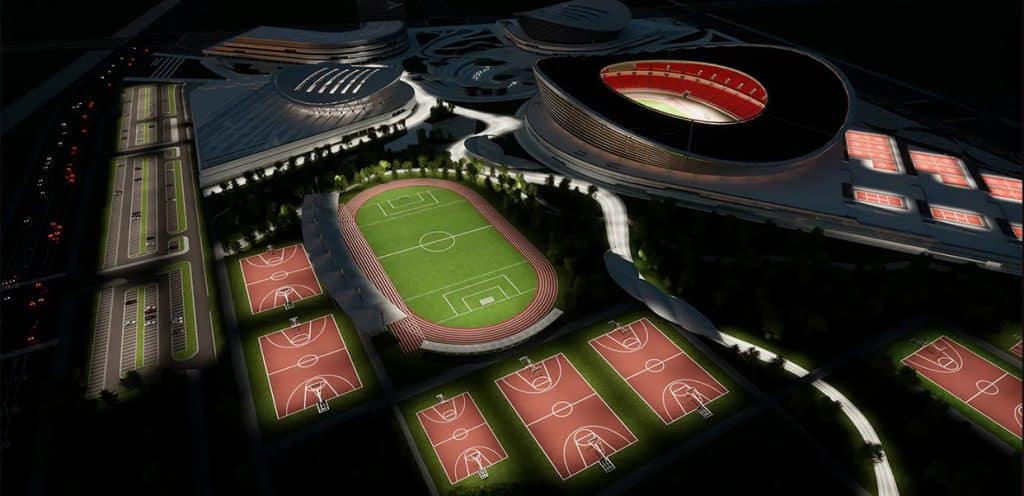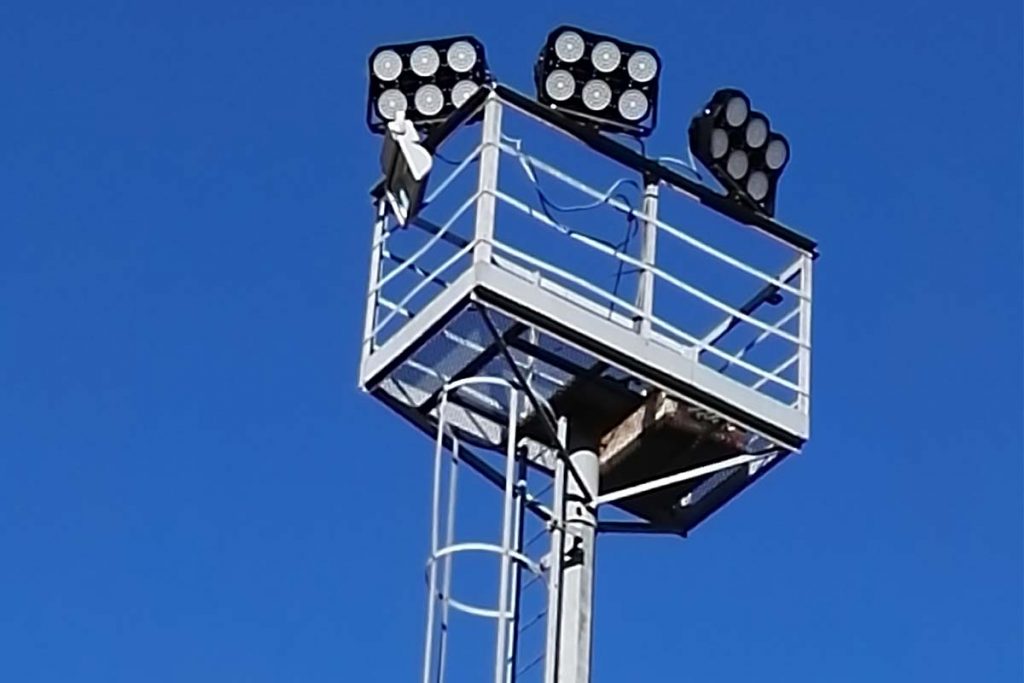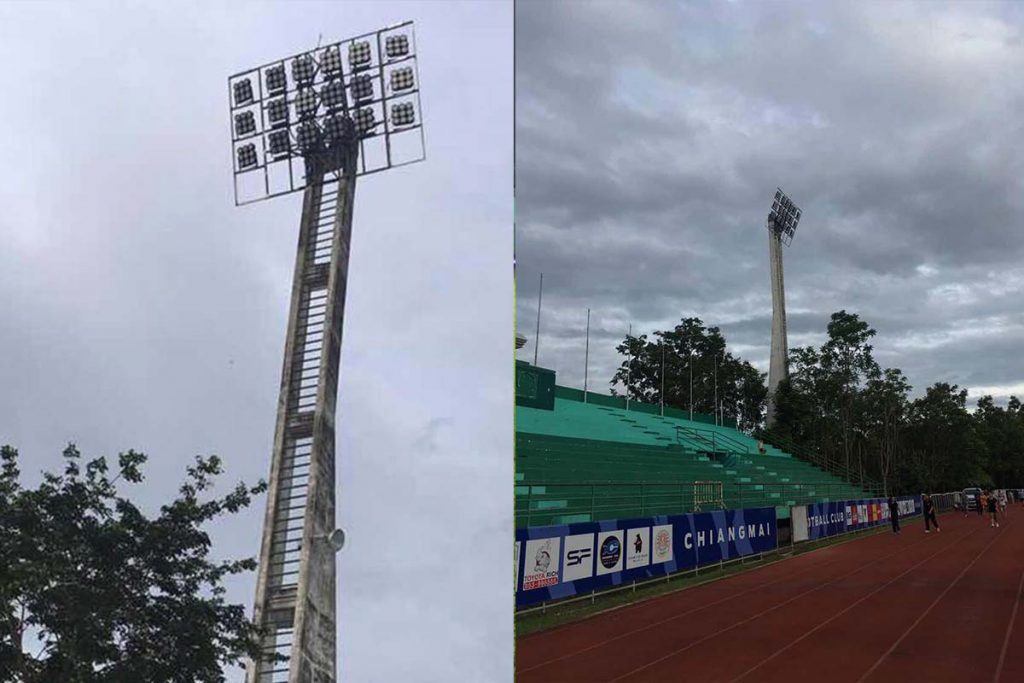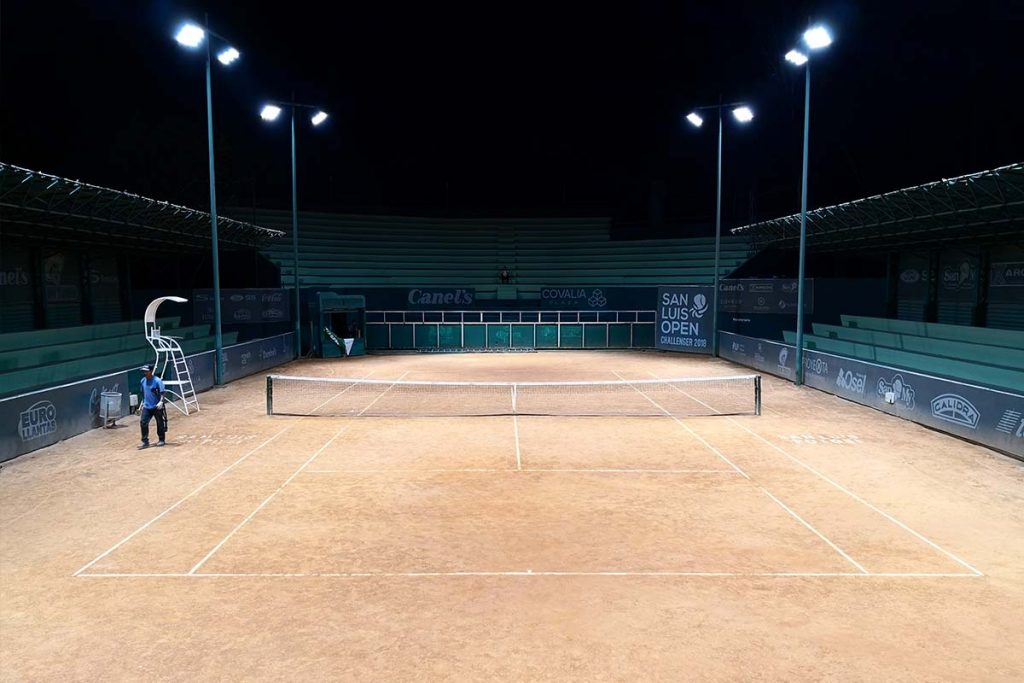Aim of sports flood lights – target aiming or degree aiming
Aim of sports flood lights – target aiming or degree aiming
Introduction
Floodlights are divided into wide beam angle floodlights and narrow beam angle floodlights. Floodlights are sometimes also called spotlights, which generally refer to floodlights with a relatively small beam angle. Aim of sports flood lights is crucial when installing them. As the final step in floodlight installation, only with proper aiming of sports flood lights can the initial design goals for illumination level and uniformity be achieved. In practice, there are two methods for aiming of sports flood lights: target aiming and degree aiming. Whether outdoors or in some indoor venues (such as large stadiums), aim sports lights (more about ZGSM sports lights) must be strictly followed. This article mainly explains what aiming of sports flood lights is, its benefits, and how to aim sports lights. Let’s delve into the main text to learn more.
What’s the aim of sports flood lights?
Generally, when installing floodlights, users need to adjust the direction of the floodlights, i.e., aim the floodlights to adjust the illuminated area. Even with high-mast lighting in plazas, although the floodlights are evenly arranged 360 degrees, we sometimes need to adjust the aim points of the lights to cover a larger illuminated area. Even with asymmetrical light distribution (Advantages of flood lights with asymmetrical light distribution), this step is necessary because if the floodlights are not aimed, the illuminance below the light pole is often much higher than other target areas. Sports flood lights on high-mast in sports fields are randomly arranged, and each sports flood light illuminates a different area. Therefore, aiming these sports flood lights is often more complex, requiring continuous adjustments to the angles (X, Y, Z axes) of these lights to achieve uniform lighting.

Why cares about the aim of sports flood lights?
Uniform and reasonable lighting
Aim sports flood lights is crucial for ensuring that your sport field is evenly and appropriately illuminated. Lighting design (lighting simulation) provides key information on how to aim sports lights. By adjusting the angle or point of illumination of the sports flood lights, we can achieve sports lighting with uniformity(What’s lighting uniformity and how to improve it?) and illuminance matching the corresponding lighting level. Conversely, installing sports flood lights without proper adjustment or haphazardly often results in uneven illuminance and uncomfortable lighting. Uneven lighting can impair athletes’ ability to judge fast-moving objects, and uncomfortable lighting (such as glare) can cause eye fatigue, reduced concentration, and other issues, all of which negatively impact athletic performance.
Reduce glare and light pollution
Properly adjusting the aiming point of sports flood lights is very helpful in reducing glare and light pollution. When the light-emitting surfaces of the lamps are parallel to the ground, glare is very low, and skyglow (a major cause of light pollution) is also reduced. So, is a larger beam angle (here means tilt angle) for flood lights always better? The answer is no. Generally, a larger beam angle, meaning the aiming point is further away from the sports flood lights, results in more severe glare and light pollution (Light pollution in street lighting). A well-designed lighting system balances glare and light pollution; therefore, we need to strictly adhere to the aiming point/tilt angle in lighting design to achieve the desired lighting result.
Energy-efficient and low operation cost
Adjusting the aiming points of sports flood lights helps achieve the required lighting levels with lower power consumption (What’s light power density?). A well-designed lighting scheme can achieve lighting standards for different event levels (such as the World Cup, regional competitions, and training matches) with lower wattage by selecting luminaire, luminaire lenses, and adjusting the aiming points. ZGSM offers solutions for stadiums of different sizes, competition levels, and pole layouts. By precisely projecting the light from sports flood lights, we can achieve lighting results for various event levels with lower total power consumption. This reduces energy costs and light pollution, thus achieving a balance between competitive needs, spectator experience, and energy conservation.
How to aim sports light?
Target aiming of sports flood lights
The core steps of the “target aiming method” for sports lighting begin with the gridding of the field. First, the entire field area needs to be divided into a uniform grid, and aiming points are established at the intersections of the target grid using visible markers such as lime (suitable for natural grass fields) or traffic cones. These points should be determined according to the construction drawings, and a sufficiently large target marked with the corresponding floodlight number should be placed to ensure clear identification from the light pole position for accurate positioning. In practice, the laser aiming scope equipped on the floodlight is used to initially align the light spot with the target center; this is a convenient method for quickly determining the approximate location. If the aiming point of individual lights is not at these intersections, additional target points need to be placed. Because the entire process requires coordination between ground personnel and those workers at high mast, it must be very careful, while allowing for a certain degree of deviation (the deviation value is determined based on the size of the field). After aiming is completed, the lights and arms must be firmly fixed in place by marking lines or setting mechanical positioning blocks. This also ensures that after maintenance (such as cleaning or replacing bulbs, and more about lighting maintenance), the lamps can be accurately restored to their original preset positions, thus guaranteeing the continuity and stability of the lighting effect.

Degree aiming of sports flood lights
The “degree aiming method” for sports flood lights is a technique that positions the floodlights by pre-setting horizontal and vertical angles. Its core steps begin with establishing a baseline: before installation, a computer-generated design, typically a lighting simulation, is used. The horizontal zero-degree baseline for the luminaire is defined as either the sideline of the field or a line perpendicular to it (e.g., the 105-meter line for a football field). The vertical zero-degree baseline is defined as the line connecting the center of the luminaire to the point projected directly below it; however, this definition can be tailored to the lighting simulation and the characteristics of the field. In practice, this process is often performed before the light pole is erected. Workers use the luminaire’s built-in horizontal and vertical angle gauges for setting the angles. The horizontal direction uses the luminaire bracket as the zero-degree baseline, ensuring the bracket is parallel to the sideline after installation. The vertical angle can be precisely adjusted using the adjustable bracket scale of the luminaire. However, this method is highly dependent on the accuracy of the initial settings. If the adjustable angle range of the equipment is limited or the adjustment step is fixed, this effect needs to be considered when designing the lighting simulation (ZGSM lighting simulation). Even a 5-degree deviation can cause the aiming point to deviate significantly, affecting the lighting result. Furthermore, the weight of the luminaire and LED driver over time can cause the bracket to sag and twist, primarily impacting the long-term stability of narrow-beam luminaires and high-angle aiming. Therefore, ensuring the position, direction, and design of the light pole perfectly match is crucial for the success of this method.

ZGSM aiming solution for sports lighting
Both target aiming and degree aiming can be achieved using data (calculation results) from lighting simulation software. Taking Dialux as an example, target aiming references Sports luminaires (coordinates list), while degree aiming references Luminaires (coordinates list). Below, we will elaborate on the aiming methods used for sports flood lights with either symmetrical or asymmetrical light distributions (More about light distribution of outdoor luminaires). If you are looking for an ideal lighting solution through lighting design, please consult the following information or contact ZGSM for more details.
Target aiming in real sports lighting application
If we use target aiming method, we need to obtain the installation document (i.e., sports luminaires), which contains the aiming point information for each sports flood light fixture to illuminate the field, as well as the coordinates of each light fixture (i.e., the distribution information on the light poles). During this process, we need to use a laser pen to position the illumination point of every sports flood light to the required aiming point. However, in this process, we need to consider whether the light fixture’s bracket can be adjusted to the corresponding angle; if not, the simulation needs to be redone. The redone simulation requires the adjustable angles of the installed light fixtures to be strictly executed, thus highlighting the advantage of degree aiming.
Degree aiming in real sports lighting application
If we use degree aiming method, we also need to obtain the Installation document (i.e., Luminaires). This table contains the positions and projection angles of all sports lighting luminaires (i.e., information related to degree aiming). Based on years of experience, we know that with symmetrical light distribution, the tilt angle of each sports flood light will be relatively large, making adjustments time-consuming. Conversely, with asymmetrical light distribution, the tilt angle at the Y-axis of most luminaires can be 0. For example, in the lighting design of a football field using asymmetric light distribution stadium lights, we know the projection angle of the sports lights through information in the page named in “Luminaires” in the lighting simulation. As we can see below, the tilt angle of most sports flood lights at the Y axis is zero. This means that the light surface of the sports flood lights is installed parallel to the ground. While only a few have tilt angles of 10 to 35 degrees (check details in section ‘Degree aiming of sports flood lights’), and these lamps’ aiming point is much far away from the sports field (outside of the sports field), we can also find the tilt angle at the Z axis, which indicates the aiming direction (left or right). For more details, please contact ZGSM and below is lighting design for your reference. With asymmetric light distribution, we can also effectively control glare (More about How to reduce glare in sports lighting?).
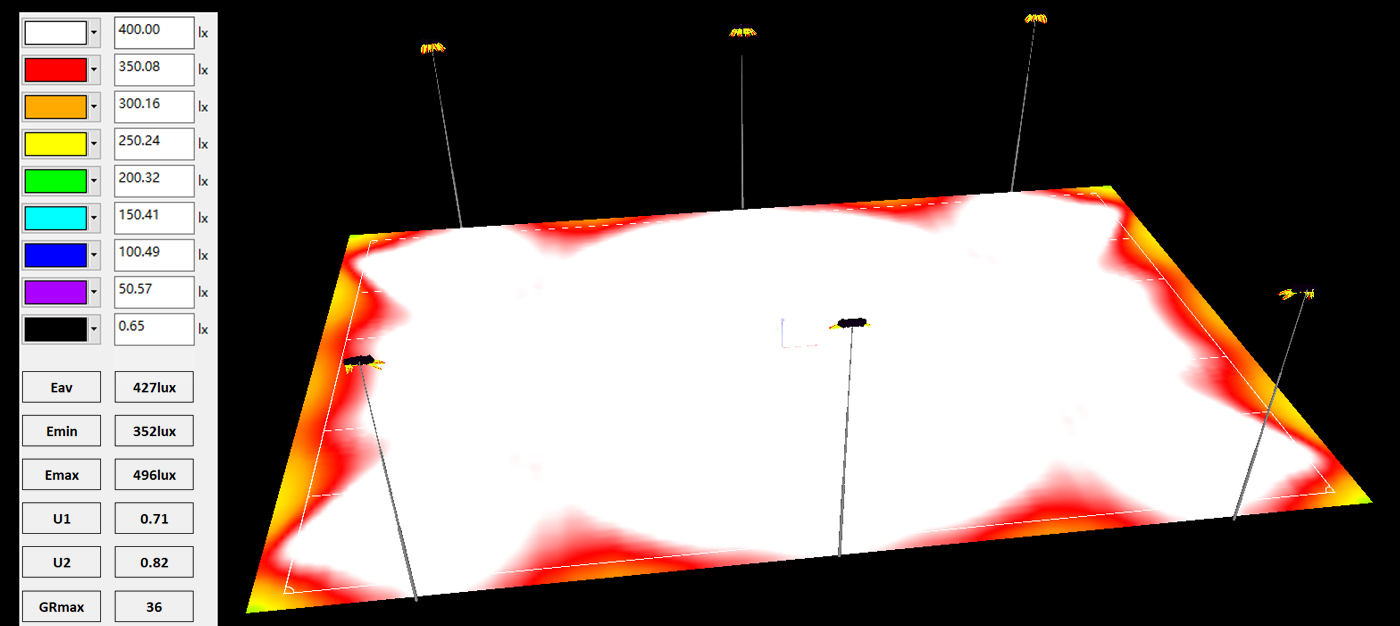
Summary
This article systematically elucidates the core essence and practical value of aiming sports flood lights. As a crucial aspect of lighting installation, aiming sports floodlights intends to achieve three core objectives through precise adjustment of the luminaire’s illumination direction: first, to create a uniform and comfortable lighting environment for the competition, ensuring athletes’ performance and safety; second, to effectively control glare and skylight glow (Kind of light trespass, find more about light trespass in sports and street lighting), reducing light pollution; and third, to achieve a balance between economy and environmental protection by optimizing the light spot distribution to meet the lighting standards for the event with lower energy consumption. The article details two implementation paths: the “target aiming method” and the “degree aiming method.” The former uses a ground target for intuitive calibration, while the latter uses a preset angle for precise positioning. Finally, a practical case study demonstrates that the two methods can be combined. Generally, using asymmetrical light distribution luminaires combined with the degree aiming method can adjust the luminous surface of most luminaires to be parallel to the ground, thereby optimizing glare control at the source. Adjusting the tilt angle of some luminaires can further optimize the lighting (improving illuminance and lighting uniformity). This method avoids the complex construction procedures associated with target aiming while achieving a perfect balance between competitive needs and energy conservation and environmental protection.
Related Products
Related Blogs
Related Cases
People also ask
Author introduction

Hello Customers,
My name is Taylor Gong, I’m the product manager of ZGSM Tech. I have been in the LED lights industry for more than 13 years. Good at lighting design, street light system configuration, and bidding technology support. Feel free to contact us. I’m happy to provide you with the best service and products.
Email: [email protected] | WhatsApp: +8615068758483

